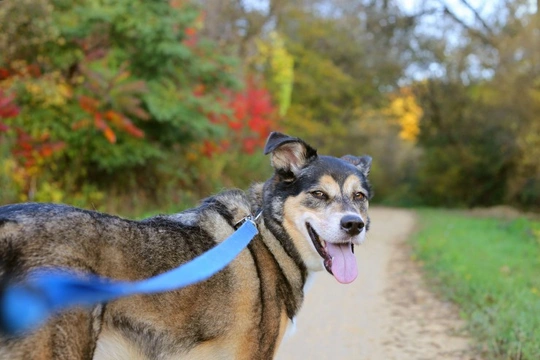
Keeping other people and dogs safe when you’re out with your own dog
In an ideal world, neither children nor adults would approach and pet a strange dog without first asking the owner if this was ok, and all dogs meeting for the first time should be supervised and only allowed to get into close quarters with each other after the two owners have had a brief word to ensure that both dogs are friendly.
However, this is far from the normal situation across the board, and every dog owner will have experienced at least once incident of someone bearing down on their dog to say hello without holding back, or an off-the-lead dog coming bounding up and leaping around their own dog without supervision!
Despite the fact that other people should take some responsibility for their actions when it comes to approaching a strange dog safely or allowing their own dog to do the same, this is unfortunately not always the case. Added to this, the onus in law is very firmly placed on the dog owner to ensure that their dog is safe in public, and that if the dog is not friendly or is prone to snapping, the owner must take appropriate measures to ensure that this does not lead to harm.
In this article, we will look at how you can assess the temperament and safety of your own dog when it comes to dealing with the public, and what you can do to ensure that you are fulfilling your duties in the law. Read on to learn more about keeping other people and dogs safe when you’re out with your own dog.
Your dog’s temperament
First of all, you will need to assess your own dog’s temperament, personality and core traits carefully in order to gain an impartial picture of their general responses and behaviours.
If your dog is very friendly, loves meeting new dogs and people, never snaps and would not pose a threat to even small, boisterous children, then this is excellent; but it is not a free pass to leave your dog roaming around or out of your sight or control either!
Even a very friendly dog may inadvertently knock over a small child if they greet them off the lead, and just because your own dog is friendly, does not mean that any dog they may approach to play with will be friendly as well.
Keep your dog within your sight, and ensure that they have excellent recall and will obey commands such as “down” or “no” first time. Remember that some people are nervous or unhappy around all dogs, even the nice ones, and so never allow your dog to invade someone’s personal space.
What happens in unusual situations
As well as assessing your dog’s normal behaviour and interactions with other dogs and people, you must also critically review how they are likely to behave in out of the ordinary situations too, such as if another dog behaves aggressively, if your dog is frightened, or if, say, a child ran straight up to your dog and threw their arms around its neck.
Pinch-points like these can lead to out of character behaviours that may still cause a problem, even though ultimately, aggression on the part of your dog was not the root of it.
If your dog is unpredictable with other dogs
If your dog is very speculative around other dogs, as certain breeds such as the Shar-pei tend to be, or if they can be prone to dominance or defensive growling and behaviour, you will have to take steps to ensure that your dog does not cause a problem when you are out in public.
This will likely mean walking your dog on the lead at all times, and/or muzzling them. It is important that all dogs get the chance to socialise with others, but if your dog can be a problem, you will likely have to arrange for this to happen within controlled environments, rather than in a free-for-all play zone like a dog park, which can easily cause stimulatory overload for such dogs, and lead to problems.
If your dog is unpredictable with other people
Owning a dog that may snap at or fight with others is a big problem, but an even larger one is if your dog tends to be unpredictable around people. Once again, your dog will need to be kept on a lead when out in public, and you should never leave your dog unsupervised, such as tied up outside of a shop where strangers might approach them.
It is also important to remember that some people, particularly children, may approach your dog without asking you first if this is ok, and whilst this is not appropriate behaviour on the part of the other person, it is still an issue that you as the dog owner must plan for.
This means that you will need to remain alert for signs of people approaching and be able to step in promptly to keep them from touching your dog; also, if you are likely to have to pass people in close quarters or go somewhere crowded, muzzling your dog in such situations may be the only viable way to ensure other people’s safety.
Early warnings
There are a range of bespoke collars, leads and harnesses available to buy that have large text writing on them stating things like “please stay back” or “not friendly,” which can help to advise strangers not to approach your dog directly. Tying a prominent yellow ribbon onto your dog’s collar or lead is also something that is becoming more widely recognised as a request to give the dog some space, and there is a lot of merit to looking into these approaches.
However, this should not replace vigilance and good management of your dog when out in public, and should not be used as a disclaimer or excuse for allowing poor behaviour from your dog when around others.



